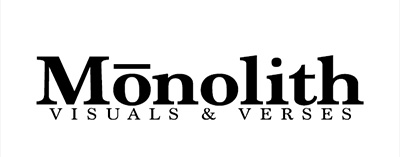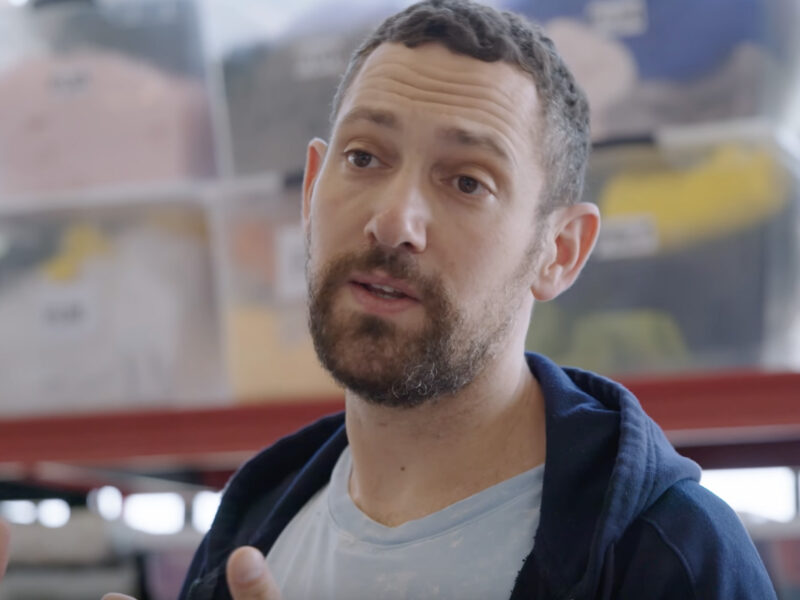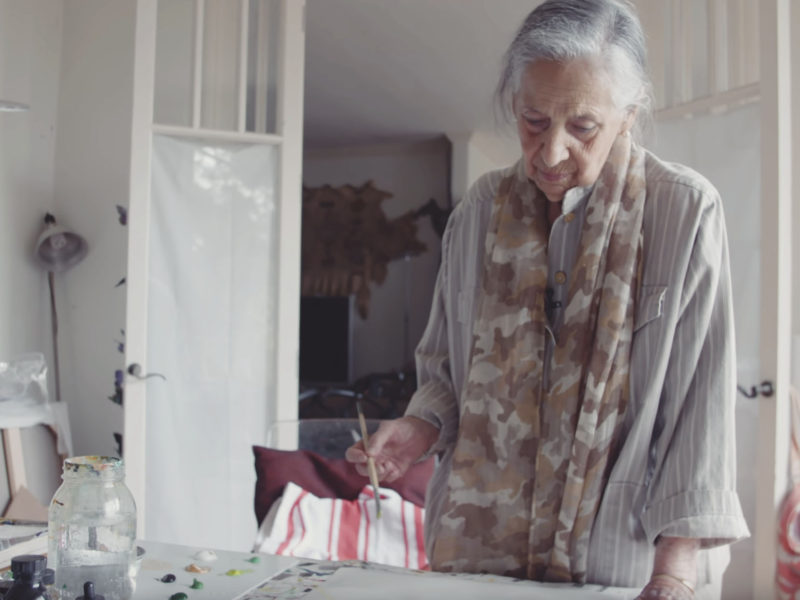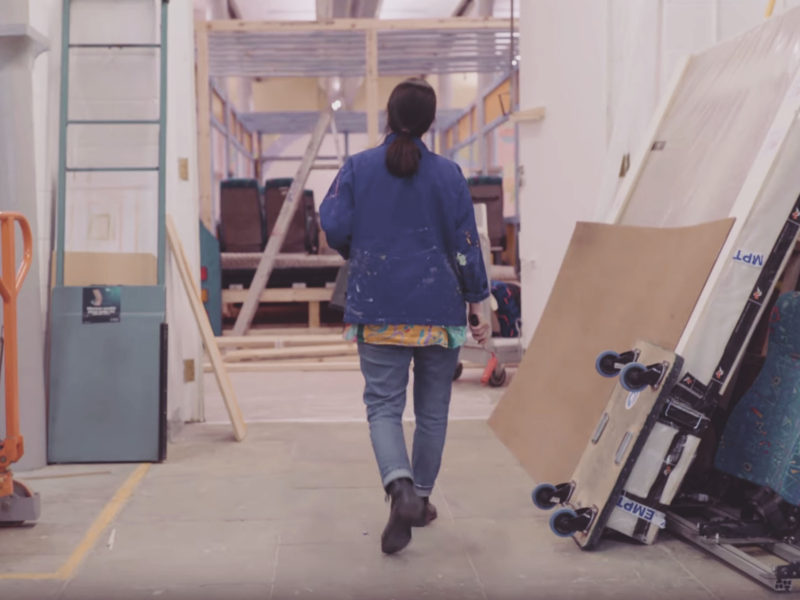Alex Da Corte: 57 Varieties
At work on his installation for the 57th edition of the Carnegie International in Pittsburgh, Pennsylvania, Alex Da Corte films a series of fifty-seven videos that combine personal narrative, art-historical references, and television characters, to create a contemporary portrait of America. Drawn to misunderstood and colorful characters, Da Corte is shown portraying Sesame Street puppeteer Caroll Spinney, the Wicked Witch of the West, the Statue of Liberty, the Pink Panther, and Mr. Rogers. Da Corte juxtaposes, remixes, and flattens these disparate images in order to tell new stories with familiar characters. Filming at his studio in Philadelphia and a soundstage in New Jersey, Da Corte enlists a team of artists to create the one-of-a-kind makeup, costumes, and props. “We as a studio all really value material,” explains Da Corte, describing the hours that go into sewing costumes, building sets, and working with neon. Da Corte’s parents, siblings, nieces and nephews also join him on set, helping with the painting of an enormous rose lattice inspired by his grandmother. “My family is all I have; my family is everything to me,” says Da Corte. Titled “Rubber Pencil Devil,” the final series of fifty-seven videos are installed within a glowing house built with colorful neon lights, inspired by Da Corte’s time spent drawing at a diner during art school. This dreamlike, immersive environment draws viewers in and evokes a range of reactions, from joy to desire to disgust. Da Corte’s images are paired with the words from Bob Dylan’s 1965 “Subterranean Homesick Blues” video and the artist wonders, “fifty years later, maybe this is a similar moment, in need of some empathetic conversation and maybe if I use [Dylan’s] words and pair them with my images, I might make sense of America.” Alex Da Corte creates vibrant and immersive large-scale installations that include wall-based works, sculptures, and videos. Colorful and surreal, his work combines personal narrative, art-historical references, pop-culture characters, and the glossy aesthetics of commercial advertising to reveal the humor, absurdity, and psychological complexity of the images and stories that pervade our culture. Da Corte’s juxtaposition, remixing, and flattening of disparate images and icons detaches them from their original meanings, allowing him to tell new stories about familiar characters, with a mixture of empathy, criticism, comedy, and the macabre.



